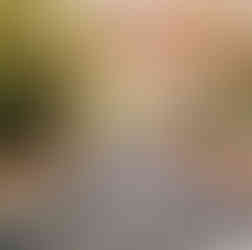Vivid and Vibrant: The Allure of Velvia 50
- Jenny Huang

- Jun 28, 2024
- 4 min read
I was so eager and excited to try slide film as soon as I got into analogue. Just the idea of looking at the colour positive film strip after development just seemed so fascinating.
After just doing some quick research, being shocked by the prices and the way it differs from standard negatives, I knew I had to get some experience shooting a few rolls of standard colour negatives before I dove into slide film photography.
Velvia 50 is a colour reversal (slide) film stock produced by Fujifilm. It is renowned for its exceptionally high colour saturation, vibrant tones, and fine grain, making it a favourite choice among photographers for landscape and nature photography.
Slide film produces a positive image on a transparent base. Unlike negative film, which creates an inverted color image that needs to be corrected during the scanning/printing process, slide film directly captures and displays the colours and tones of the scene as they are.
First Impressions
Getting my hands on a roll was tricky at best, with it always being sold out. So if you see it in stock, immediately put it in your cart! I tend to find online prices cheaper than retailers so if you are in Australia, I normally would by from online retailers like Walkens or Decisive Moment for cheaper pricing.
After getting a roll and leaving it in my fridge for months, I decided it was finally time to load this baby up into my Canon EOS 30. I figured I wasn't confident using this on my more manual AE-1 so I decided to rely on a more advanced camera that has electronic auto focus and more accurate metering. I didn't want to risk $$ on my first roll!
To be honest, it did take me a while to finish the roll with 36 exposures, because I wanted to find scenes that were appropriate to shoot - landscapes or anything with lots of punchy and bright colours.
After getting my scans and positive back, the scans didn't do the images justice. Using a light box, and viewing with a loupe, the images had so much saturation and looked better in person compared to the scans.
With such fine grain, the images almost looked digital.
I was indeed impressed!
With some of the images however, I noticed there was a slight blue cast when I shot right in the middle of the day, and had low saturation. Being a slide film, Velvia 50 has low exposure latitude, which means it requires precise exposure settings as it is less forgiving of mistakes in exposure compared to other films, especially negative films.
See for example:
With a narrow dynamic range, it has a limited ability to capture details in both the highlights and shadows simultaneously. In some of the scenes above where there was high contrast, the darkest and the lightest parts of the image had a loss of detail and there was some blue cast.
I want to mention I did shoot a photo to see how it performs on skin tones, and it was surprisingly ok:

Skin tones not too red
On Medium Format
For my second roll I knew I wanted to go up to the Blue Mountains to shoot Autumn colours. Loaded into my Mamiya 645 I thought it would create some amazing vibrant images.
Vivid saturation
The day was quite sunny so I did notice the whites were blown out in the scans. However when viewed with a lightbox it wasn't as apparent.
Making the most of this film
After reviewing this film, for me I would personally avoid shooting in super high contrast scenes (for example an ocean sunset) unless you have filters to avoid blacking out your shadows and blowing out your highlights.
It performs amazing on overcast days with colourful foliage and brightly lit colourful scenes.
Since 50 iso is very light thirsty I would highly recommend bringing a tripod in case hand held might introduce shake in lower light situations.
As for enjoying your slide images, they are best viewed in a light box or even better yet a projector!
I currently don't own one but I'm sure rolling out an old projector and loading the sides onto the carousel is really a retro experience - the cool clacking of switching to the next frame, the tactile sensations of pressing buttons and knobs just seems like a fun experience to have!
Final thoughts
I think Velvia 50 is definately a rewarding film to shoot. Because its more tricky to nail exposure, seeing your images turn out so lovely on the film strip is a satisfying feeling.
Also since I shot this in a more slow, composed, planned way, I got to take in and enjoy more of the beauty of the scene in general.
I say if you're looking for a challenge and want to try a film that could knock your socks off give Velvia a go, you won't be disappointed!


















































Comments